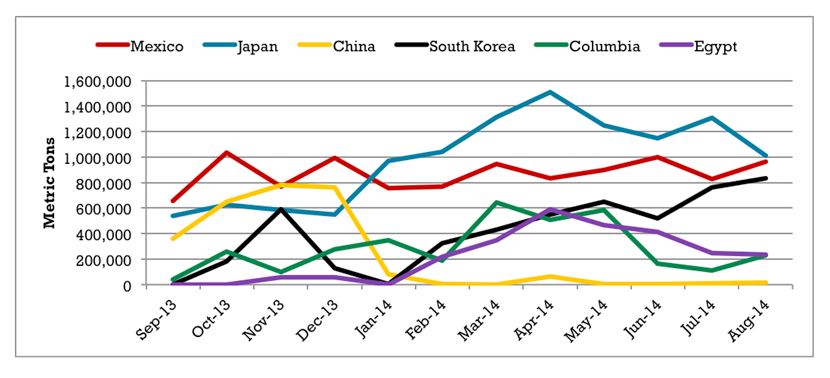Deciphering the Dissimilarities: ARIMA vs. SARIMA

In the realm of time series analysis, two models stand out prominently: ARIMA (Autoregressive Integrated Moving Average) and SARIMA (Seasonal ARIMA). While they share commonalities, they also exhibit distinct characteristics that set them apart. This article aims to elucidate the disparities between ARIMA and SARIMA, providing clarity for practitioners in their analytical endeavors.
Understanding Time Series Analysis
Defining Time Series Data
Time series data comprises observations collected over sequential time intervals. It is widely used in fields like finance, economics, and climate science for making predictions based on historical trends.
Significance of Time Series Modeling
Time series analysis provides valuable insights into trends, patterns, and seasonality within a dataset. This, in turn, aids in making informed decisions in various industries.
The ARIMA Model
Unpacking the ARIMA Framework
ARIMA is a statistical model used for analyzing and forecasting time series data. It combines autoregressive (AR) and moving average (MA) components with differencing to achieve stationarity.
Components of ARIMA
- Autoregressive Component (AR): Models the relationship between an observation and several lagged observations.
- Integrated Component (I): Focuses on differencing the time series data to make it stationary.
- Moving Average Component (MA): Models the error term as a linear combination of previous error terms.
Applicability and Use Cases
ARIMA finds applications in various domains, including economics, finance, epidemiology, and meteorology. It is particularly effective for data exhibiting non-seasonal trends.
SARIMA Model: Seasonality Incorporated
Introduction to SARIMA
SARIMA is an extension of ARIMA that accounts for seasonal patterns in the data. It introduces additional seasonal autoregressive (SAR), seasonal integrated (SI), and seasonal moving average (SMA) components.
Seasonal Components in SARIMA
- Seasonal Autoregressive (SAR) Component: Models the relationship between an observation and lagged values with seasonal patterns.
- Seasonal Integrated (SI) Component: Focuses on differencing the data to achieve seasonality.
- Seasonal Moving Average (SMA) Component: Models the error term with seasonal patterns.
Real-world Applications
SARIMA is especially useful for datasets exhibiting both non-seasonal and seasonal trends. It finds applications in fields such as retail sales, tourism, and energy consumption.
Differing Dimensions: ARIMA vs. SARIMA
Core Differences in Approach
The primary distinction lies in how ARIMA and SARIMA handle seasonal patterns. ARIMA is adept at modeling non-seasonal data, while SARIMA extends this capability to encompass seasonal variations.
Scenarios Favoring ARIMA
ARIMA is suitable when the data primarily displays non-seasonal trends and lacks distinct seasonal patterns.
Scenarios Favoring SARIMA
SARIMA shines when the data exhibits both non-seasonal and seasonal trends, making it a more comprehensive choice for certain datasets.
Choosing Between ARIMA and SARIMA
Factors Influencing Model Selection
- Nature of the Data: Assess whether the data exhibits seasonal patterns in addition to non-seasonal trends.
- Model Complexity: Consider the complexity of the model relative to the data characteristics.
- Accuracy Requirements: Evaluate the level of accuracy required for the forecasting task.
- Computational Resources: Take into account the computational resources available for model estimation.
Implementation and Analysis
Steps for Implementing ARIMA
- Data Preparation and Exploration
- Model Identification
- Parameter Estimation
- Model Validation
- Forecasting and Evaluation
Steps for Implementing SARIMA
- Data Preparation and Exploration
- Seasonal Decomposition
- Model Identification
- Parameter Estimation
- Model Validation
- Forecasting and Evaluation
Comparative Analysis of Results
Compare the performance of ARIMA and SARIMA models on the same dataset to assess
which one provides more accurate forecasts.
Practical Considerations and Caveats
Handling Seasonal Data
For datasets with clear seasonal patterns, SARIMA is often the preferred choice. However, it’s essential to confirm the presence of seasonality before applying SARIMA.
Addressing Data Stationarity
Both ARIMA and SARIMA models require stationary data. Apply differencing or other techniques to achieve stationarity before modeling.
Interpreting Model Output
Understanding the parameters and diagnostics output by the models is crucial for accurate interpretation and decision-making.
Fine-tuning for Optimal Results
Parameter Optimization in ARIMA
Experiment with different values of autoregressive (p), differencing (d), and moving average (q) orders to find the best-performing model.
Parameter Optimization in SARIMA
In addition to the non-seasonal parameters, fine-tune the seasonal autoregressive (P), seasonal differencing (D), and seasonal moving average (Q) orders for optimal results.
Conclusion
In the dynamic field of time series analysis, choosing between ARIMA and SARIMA is a critical decision. Understanding their differences and knowing when to apply each model empowers analysts to make accurate forecasts.
FAQs
Can ARIMA handle seasonal data?
- ARIMA is designed for non-seasonal data. For seasonal patterns, SARIMA is more appropriate.
What are the key components of SARIMA?
- SARIMA includes seasonal autoregressive (SAR), seasonal integrated (SI), and seasonal moving average (SMA) components in addition to the non-seasonal ARIMA components.
When should I choose ARIMA over SARIMA?
- ARIMA is suitable for data with non-seasonal trends, while SARIMA is preferred for data with both non-seasonal and seasonal patterns.
How do I achieve stationarity in my time series data?
- Stationarity can be achieved through differencing or other techniques like seasonal differencing for datasets with clear seasonal patterns.
What factors should I consider when choosing between ARIMA and SARIMA?
- Consider the nature of the data, model complexity, required accuracy, and available computational resources.




